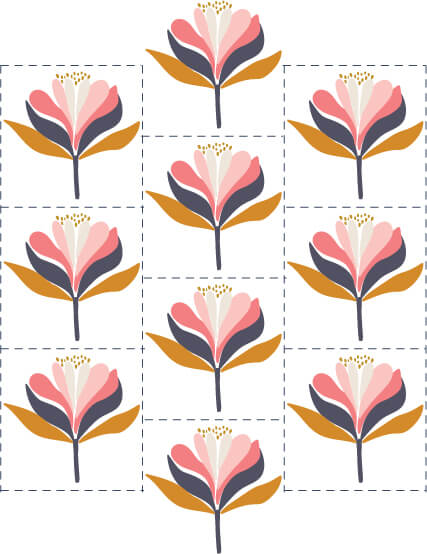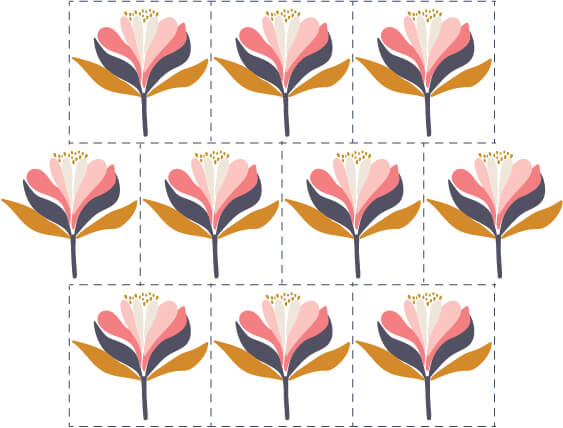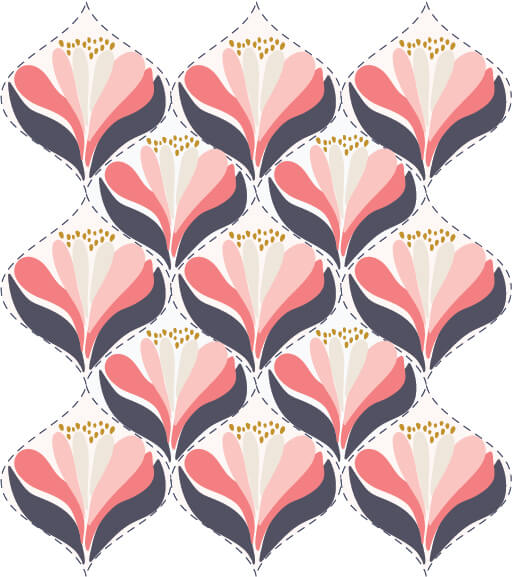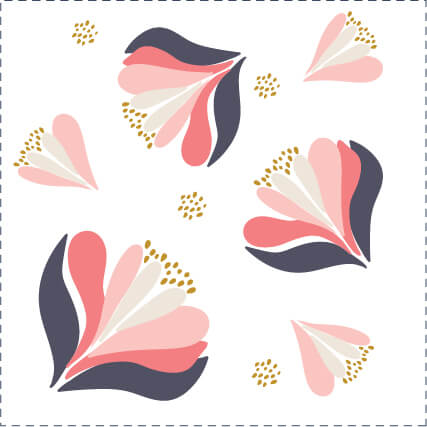learn about all things surface pattern design including the creative design process, being a successful creative entrepreneur & stepping into the mindset of a successful designer
welcome to the pattern design blog
blog
The
Categories
Popular
How to create the 7 most common Surface Pattern Repeats
Being able to create seamless pattern repeats is one of the most fundamental aspects of being a surface pattern designer. It’s a little overwhelming, to begin with, but once you understand the basics you’ll find that pattern repeats are nothing more than mathematical formulas. Let me simplify it and explain:
HOW TO CREATE THE 7 MOST COMMON SURFACE PATTERN REPEATS
1. FULL DROP/BLOCK PATTERN REPEAT

One of the most common and simplest of all repeat systems is the full drop or block surface pattern repeat. The repeat unit is created by stacking the original repeat block in a grid format. Although it’s often created as a square unit, full drop repeats can also be rectangular.
2. HALF DROP PATTERN REPEAT

Another very commonly used surface pattern repeat is the half drop. It consists of the repeat unit being stacked vertically in a column format which is then offset by half in the next vertical row. Because of this, half drop pattern repeats are a great way at quickly allowing the design to look less formal.
3. BRICK PATTERN REPEAT

Just like the half drop, the brick repeat unit is also very commonly used in surface pattern repeats. It’s very similar to the half drop pattern repeat except instead of the repeat unit being stacked vertically in a column format, it is stacked horizontally. The repeat unit is then offset by half in the next horizontal row resembling a brick wall. As a result, just like with the half drop pattern repeats, brick repeats allow a design to look less formal.
4. DIAMOND PATTERN REPEAT

A diamond surface pattern repeat is simply created with a repeating diamond shape this therefore results in the elements being arranged in diagonal rows.
5. OGEE PATTERN REPEAT

An ogee surface pattern repeat is similar to the diamond repeat except it has rounded edges at the sides and points at the top and bottom, much like an onion.
6. TOSSED/ RANDOM PATTERN REPEAT

In a tossed/random surface pattern repeat, the elements of the design are scattered within the repeat unit. The unstructured nature of a tossed repeat results in a very organic and non-linear design.
7. STRIPE PATTERN REPEAT

The stripe surface pattern repeat is a layout that has a strong vertical, horizontal or diagonal format. Stripes don’t need to be restricted to being made up of blocks of colour. Some other ways to use stripes include blocks of texture, patterns, repeated motifs, zig zags or wavy lines.
Choosing the right pattern repeat for your design will depend on what sort of look and feel you are after. The great thing is once you have your motifs, you can keep experimenting with the different repeat layouts until you get the result that you are after.
I hope this has given you a good understanding of what’s possible in the world of surface pattern repeats and has inspired you to start creating your own pattern repeats.
Click here to find out more about creating seamless repeats.
To find out more about repeating patterns, I’ve created an ebook of the Most Common Surface Pattern Repeats with a bonus of 5 extra pattern repeat layouts. Download your FREE copy and enjoy!

Want to create another revenue stream by turning your art into surface pattern designs?
Get the free guide
Get my FREE Surface Pattern Design Starter Guide